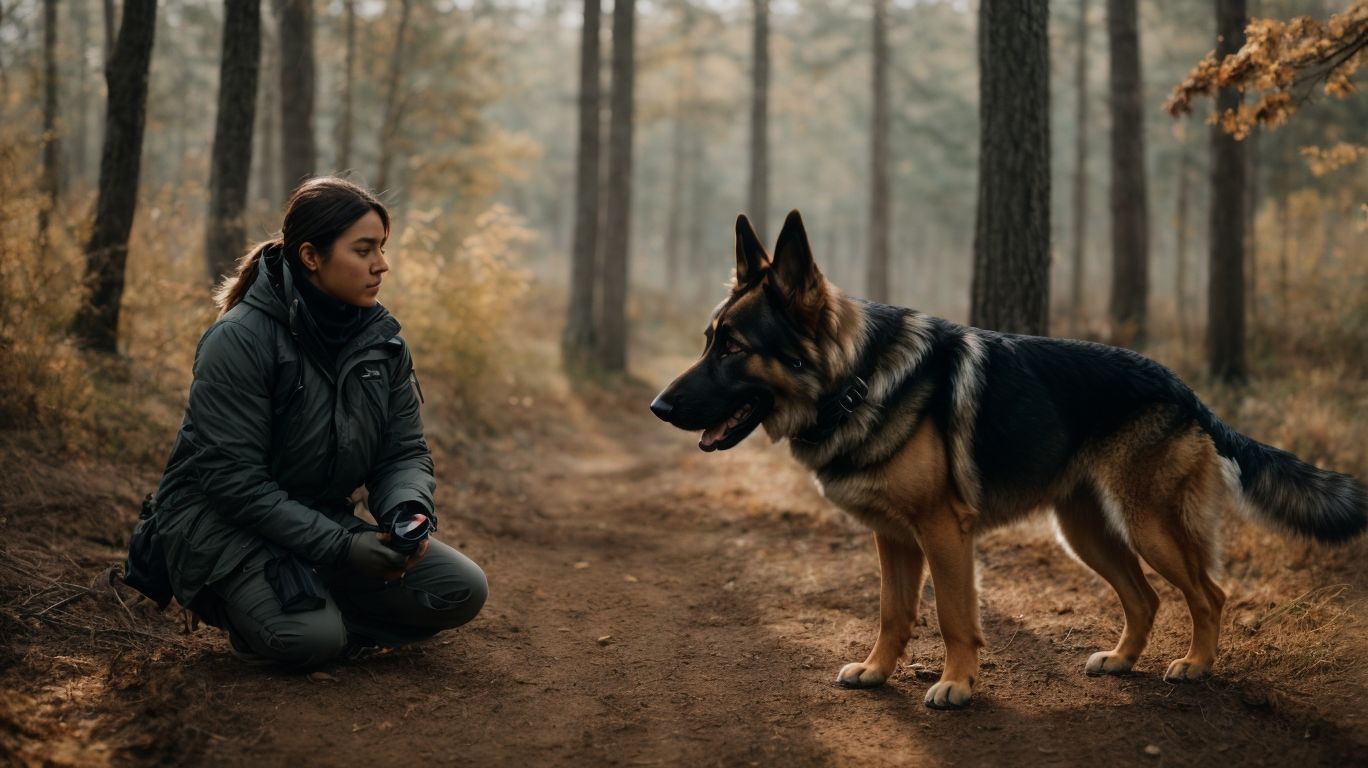
Teaching Your German Shepherd: Specialized Commands for Breed-specific Training
German Shepherds are known for their intelligence, loyalty, and impressive work ethic, making them one of the most popular dog breeds for various roles, including as police and military dogs, search and rescue animals, and loving family pets. To ensure that German Shepherds are well-behaved and responsive, breed-specific training is essential.
In this article, we will delve into the importance of breed-specific training for German Shepherds and explore the basic commands that are crucial for their training. From teaching them to sit and stay to coming when called and maintaining a proper heel position, we will cover the steps, common challenges, and tips for each command, equipping you with the knowledge to train your German Shepherd effectively.
Whether you are a new German Shepherd owner or looking to improve your training techniques, this comprehensive guide will provide valuable insights for a successful training journey with your loyal and intelligent companion.
Why Is Breed-specific Training Important for German Shepherds?
Breed-specific training is crucial for German Shepherds due to their unique characteristics and behavioral traits that require specialized commands and obedience techniques.
Understanding the distinct pack mentality and protective nature of German Shepherds is essential for effective training. Their intelligence, loyalty, and herding instincts necessitate specialized commands to channel their energy positively. Obedience classes tailored to their needs can help reinforce desired behaviors and prevent potential issues.
Advanced training techniques, such as agility and scent work, cater to their athleticism and mental stimulation. By addressing their specific traits, breed-specific training ensures that German Shepherds thrive as obedient, well-adjusted companions.
What Are the Basic Commands for German Shepherd Training?
Basic commands for German Shepherd training encompass foundational elements such as leash training, hand signals, verbal cues, and the use of specific command words and training tools to establish obedient behavior and effective communication between the handler and the trainee.
Leash training is essential to ensure the German Shepherd understands how to walk without pulling and maintains focus on the handler. Effective communication through hand signals and verbal cues strengthens the bond and aids understanding between the dog and the handler. Using appropriate command words and training tools, such as clickers or treats, reinforces positive behavior and encourages quick learning. This reward-based training approach can successfully modify undesirable behaviors and instill desired responses in German Shepherds.
Teaching Your German Shepherd to Sit
Teaching your German Shepherd to sit involves utilizing intelligent commands, positive reinforcement, and a combination of leash training, hand signals, and verbal cues to establish obedient behavior and mental stimulation.
What Are the Steps to Teach a German Shepherd to Sit?
The process of teaching a German Shepherd to sit involves a series of steps that encompass positive reinforcement, socialization, effective leash training, and the integration of hand signals and verbal cues to establish obedient behavior and mental stimulation.
Positive reinforcement is vital as it encourages the desired behavior, while socialization helps in developing the dog’s confidence and adaptability. Leash training techniques are imperative to ensure control and safety, and the use of hand signals and verbal cues facilitates clear communication. Incorporating pack mentality principles in training can help the German Shepherd understand its role within the family unit, leading to a more balanced and responsive pet.”
What Are Some Common Mistakes to Avoid When Teaching a German Shepherd to Sit?
When teaching a German Shepherd to sit, it is essential to be mindful of common mistakes related to obedience, reinforcement, training techniques, and the handler’s communication, including voice tone and body language, to ensure effective learning and behavior modification.
One common mistake to avoid is using overly harsh or aggressive communication, as German Shepherds respond best to positive reinforcement and gentle guidance. It’s crucial to maintain a calm and assertive demeanor to establish yourself as the pack leader and gain their respect.
Inconsistency in training methods or failing to provide mental stimulation can hinder progress. By incorporating these elements and maintaining clear, confident body language, you can effectively teach your German Shepherd to sit and strengthen your bond with them.
Teaching Your German Shepherd to Stay
Teaching your German Shepherd to stay involves the use of specialized commands, positive reinforcement, and effective leash training techniques, along with verbal cues and appropriate training tools to establish obedient behavior and mental stimulation.
What Are the Steps to Teach a German Shepherd to Stay?
The process of teaching a German Shepherd to stay involves specific steps focused on positive training, reinforcement, obedience, and the integration of leash training, verbal cues, and command words to establish obedient behavior and mental stimulation.
- Start with basic obedience training, such as establishing yourself as the pack leader and using behavior modification techniques to encourage the desired response.
- Slowly introducing the concept of staying through short intervals and gradually increasing the duration while using positive reinforcement like treats and praise can aid in solidifying the behavior.
- Incorporating mental stimulation activities, such as obedience exercises and interactive play, can also help to reinforce and maintain the stay command.
- A consistent approach with clear verbal cues and command words, accompanied by leash training, can further enhance the effectiveness of the training process.
What Are Some Tips for Reinforcing the Stay Command with a German Shepherd?
Reinforcing the stay command with a German Shepherd requires effective strategies related to positive training, reinforcement, the handler’s communication, including voice tone and body language, and the concept of positive reinforcement to ensure successful learning and behavior modification.
When practicing the stay command with your German Shepherd, remember to use consistent and clear cues, such as “stay” or a hand signal. Use a cheerful and encouraging voice to motivate your dog, and always reward their compliance with treats, praise, or playtime.
Remain composed and avoid displaying tension or frustration, as your body language and demeanor can influence your dog’s response. By incorporating mental stimulation and positive reinforcement, your German Shepherd will grasp the stay command more effectively.”
Teaching Your German Shepherd to Come
Teaching your German Shepherd to come involves the use of specialized commands, positive reinforcement, socialization, and a combination of mental stimulation, leash training, verbal cues, and training tools to establish obedient behavior and effective communication.
What Are the Steps to Teach a German Shepherd to Come?
The process of teaching a German Shepherd to come involves specific steps focused on reinforcement, positive training, socialization, and the integration of leash training, verbal cues, and command words to establish obedient behavior and effective communication.
This training requires a strong emphasis on building a bond with your German Shepherd, as they are known to be loyal pack animals. Begin with socialization to expose your dog to various environments and people. Use positive reinforcement, such as treats or praise, to encourage the desired behavior of coming when called. Consistent practice with leash training, incorporating verbal cues and specific command words like ‘come’ will help solidify the association and response. Establish yourself as the pack leader through consistent training and behavior modification techniques to ensure your German Shepherd’s obedience.
What Are Some Common Challenges When Teaching a German Shepherd to Come?
Teaching a German Shepherd to come may pose common challenges related to reinforcement, positive training, socialization, the handler’s communication, including voice tone and body language, and the concept of positive reinforcement, which require specific strategies for effective learning and behavior modification.
Creating a positive and stimulating environment is essential when training a German Shepherd to come. Utilizing rewards like treats or toys, praising good behavior, and incorporating mental stimulation activities can reinforce the desired behavior.
Socializing the German Shepherd in various environments helps them understand the come command in different situations. Maintaining consistent and clear communication through a calm voice tone and confident body language builds trust and encourages the dog to respond receptively.
Teaching Your German Shepherd to Heel
Teaching your German Shepherd to heel involves the use of specialized commands, positive reinforcement, and a combination of leash training, verbal cues, and training tools to establish obedient behavior and mental stimulation.
What Are the Steps to Teach a German Shepherd to Heel?
The process of teaching a German Shepherd to heel involves specific steps focused on reinforcement, positive training, and the integration of leash training, verbal cues, and command words to establish obedient behavior and mental stimulation.
- This involves being the pack leader, setting clear boundaries, and using positive reinforcement to encourage the desired behavior.
- When starting, it’s important to use a short leash and begin in a quiet, distraction-free environment.
- As your German Shepherd walks beside you without pulling, reward them with treats and positive verbal cues.
- Gradually increase the distractions and practice in different environments to generalize the behavior.
Consistency and patience are essential for effective heel training, as it strengthens the bond with your dog and promotes better behavior.
What Are Some Tips for Maintaining Heel Command with a German Shepherd?
Maintaining the heel command with a German Shepherd requires effective strategies related to reinforcement, positive training, the handler’s communication, including voice tone and body language, and the concept of positive reinforcement to ensure continued success in learning and behavior modification.
Consistency is key in reinforcing the heel command. Incorporating treats or favorite toys as positive reinforcements can motivate the German Shepherd to maintain the heel position. Employing a calm and assertive voice tone conveys leadership, enhancing the dog’s understanding of the desired behavior. Clear and confident body language also signals to the dog about the desired heel position.
Regular practice in various environments, coupled with mental stimulation activities, solidifies the heel command in a German Shepherd’s training routine.




No Comments